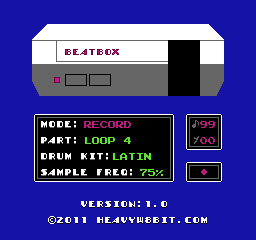[youtube]http://www.youtube.com/watch?v=daabGlRq2Mk[/youtube] BEATBOX will allow you to play beats live and record loops on the NES. Features include: – 4 Recordable Drum Loops – 2 Recordable Drum Fills – 4 Sample Frequencies – 2 Drum Kits available: Rock & Latin –… Read more
PROCHIP
Pro Chipmusic by Tristan Corrales I made a bunch of generic n.e.s music and wanted to share it with the community *smile* Not much to say about it. just a bunch of ohcs from #botb. A response to wizwars AntiChipmusik

